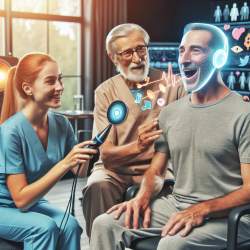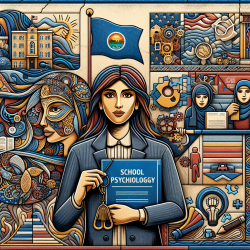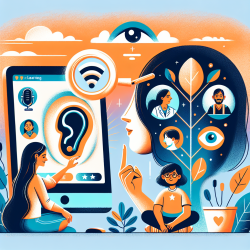In the evolving field of speech therapy, professionals continually seek innovative tools and methods to enhance therapeutic outcomes for individuals with speech and voice disorders. One such innovation, the Speech Viewer, represents a significant advancement in providing visual and auditory feedback for speech production. This interactive computer system, as reviewed in the article "Cases in Neurogenic Communicative Disorders," offers a comprehensive approach to the rehabilitation of various speech and voice disorders. This blog post aims to explore the features of Speech Viewer, its clinical applications, and encourage further research to optimize its use in practice.
Understanding Speech Viewer
Speech Viewer is designed to aid in the rehabilitation process by offering immediate visual and auditory feedback on aspects of speech production such as pitch, loudness, voicing, breath support, intonation, and vowel quality. The system consists of software, a microphone, a speaker, and stores, and analyzes speech input. With 12 modules grouped into three categories based on their clinical usefulness, Speech Viewer operates on IBM Personal System/2 model 25 or 30 computers and uses IBM Dos 4.0.
Clinical Applications of Speech Viewer
The system's Awareness Modules provide visual feedback on one or two aspects of speech sounds, making abstract speech concepts concrete for the client. This is particularly useful for very young children or individuals with limited receptive language skills. The Skill Building Modules, using a video game format, teach control over pitch, voicing, breath support, and vowel productions in a language-free environment. The Patterning Modules allow for detailed examination of speech aspects, complementing the skill-building modules with technical/analytical displays.
Speech Viewer has been successfully used for aural rehabilitation, remediation of apraxia and dysarthria, and addressing clinical goals such as reducing jitter, improving breath support, reducing speech rate, and improving vowel productions. Its flexibility allows speech-language pathologists to adapt the modules to address a multitude of clinical goals, making it a valuable tool in therapy settings.
Benefits and Limitations
One of the primary benefits of Speech Viewer is its user-friendly interface and the motivational aspect of its game-like modules, which have been found appealing to both children and adults. The system's ability to provide immediate feedback facilitates self-monitoring and awareness in clients, enhancing the therapeutic process.
However, there are limitations to consider. Speech Viewer does not assess voice quality or display hypernasality, nor does it allow for visualization of consonants. The system's scales for vowel recognition and loudness require clinical experience for interpretation, and the documentation provided is fragmented, potentially challenging for clinicians with no previous computer experience.
Encouraging Further Research
While Speech Viewer presents a promising tool for speech therapy, further research and development are necessary to expand its applications and address its limitations. Future versions could include improvements to documentation, software, and the addition of modules to assess and visualize a broader range of speech and voice disorders. Additionally, studies on the system's effectiveness across different age groups and disorders could provide valuable insights into its broader applicability and potential adjustments to enhance its clinical utility.
In conclusion, Speech Viewer offers a unique and valuable approach to speech therapy, enabling clinicians to utilize visual and auditory feedback to enhance therapeutic outcomes. Its application in the rehabilitation of speech and voice disorders represents a significant step forward in the integration of technology in speech therapy practices. However, the system's full potential can only be realized through continued research and development, aimed at addressing its current limitations and expanding its capabilities. As speech-language pathologists and researchers explore the possibilities offered by Speech Viewer, we can anticipate further advancements in the field that will ultimately benefit individuals with speech and voice disorders.
To read the original research paper, please follow this link: Cases in Neurogenic Communicative Disorders.










